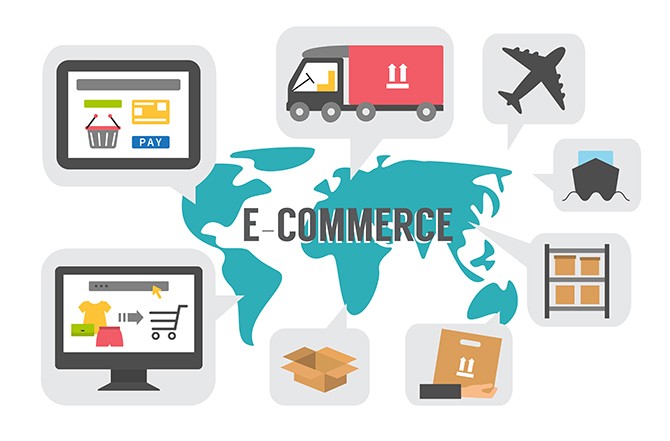E-commerce Market is projected to reach USD 20.35 Trillion by 2030 , growing at a CAGR of +15%
E-commerce Market size was valued
at USD 7.65 Trillion in 2023 and is projected to reach USD 20.35 Trillion by
2030, growing at a CAGR of +15% during the forecast period 2024-2030.
Key Players: Amazon, Alibaba Group, eBay, Walmart, Shopify, com,
Rakuten, Flipkart, Etsy, MercadoLibre, Zalando, ASOS, Overstock, Snapdeal,
Pinduoduo, Wayfair, Lazada, Coupang, Newegg and other.
Recent
Developments:
August 9, 2019: Flipkart, India’s leading e-commerce marketplace,
has introduced ‘Flipkart Ideas’, a curated selection of content on its
platform, to make consumers’ shopping experience more meaningful by guiding
them through their e-commerce purchase journey. Integrated on the Flipkart
platform, ‘Flipkart Ideas’ aims to inspire users by helping them discover new
products and brands through credible information and bring forth ideas that
help consumers add new purchases seamlessly into their lives. This launch plays
a crucial role in bringing the next 200 million consumers online who are
primarily from tier-II and tier-III cities, enabling them to narrow down
specific products suitable for their needs.
February 7, 2024: Amazon Web Services (AWS) India Private
Limited* announced the AWS Space
Accelerator: India, a technical, business, and mentorship opportunity designed
to foster startups focused on space technology, and accelerate their
development, with support from, T-Hub, and Minfy. This is AWS’s first
accelerator program in India focused on startups in the space sector, and
follows the MoU it signed with ISRO and IN-SPACe in September last year, which
envisions to nurture startups in space-tech, and support innovation in the
sector.
The key regions covered in the E-commerce market report are
North America, Europe, Asia Pacific, Latin America, Middle East and Africa. It
also covers key regions (countries), viz, U.S., Canada, Germany, France, U.K.,
Italy, Russia, China, Japan, South Korea, India, Australia, Taiwan, Indonesia, Thailand,
Malaysia, Philippines, Vietnam, Mexico, Brazil, Turkey, Saudi Arabia, U.A.E,
etc.
North America accounted for the
largest market in the E-commerce market. It accounted for 36% of the worldwide
market value. For the E-commerce industry, North America has proven to be a
strong and dynamic region. Online shopping has experienced a notable upsurge,
particularly in the United States and Canada. The broad use of digital
technologies and the rising internet and mobile device penetration are some of
the main factors fueling this growth. Big e-commerce players like Amazon, eBay,
and Walmart have shaped the American market in significant ways. In addition to
providing a large selection of goods, these platforms have also brought
cutting-edge services like same-day delivery and subscription-based business
models, which have helped to broaden the scope of e-commerce.
Customers now enjoy a seamless shopping experience thanks to the
accessibility of payment options, which includes the widespread use of credit
and debit cards as well as the expanding acceptance of mobile payment options.
The effectiveness of E-commerce operations has also been enhanced by the
existence of a well-established logistics and supply chain infrastructure,
which guarantees prompt and dependable deliveries. The COVID-19 pandemic
hastened the trend towards e-commerce as consumers have prioritized the
convenience of e-commerce platforms due to lockdowns and safety concerns. In order
to remain competitive in the ever-evolving market, many traditional retailers
also made the switch to internet platforms.






























Leave A Comment